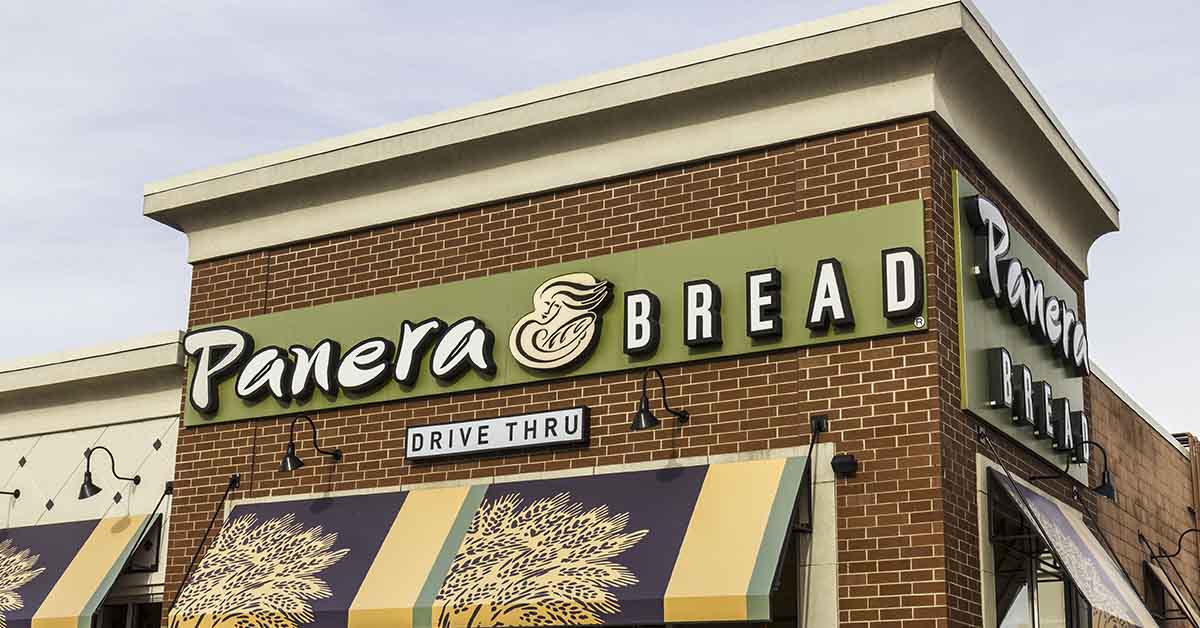Amazon has created an alternative method of paying at shops and restaurants. Instead of a card, the Amazon One scanner reads the palm of users’ hands. All they need to do is hover their palm over the scanner momentarily, and the payment goes through. The system also collects data like personal preferences and shopping history to offer target ads and recommendations. But this biometric technology was met with controversy and skepticism. And these criticisms extended to Panera Bread when the bakery-cafe chain incorporated this technology into its loyalty program.
Panera Bread’s New Loyalty Program Palm Scanner
As loyalty members enter certain Panera shops, they can scan their hands, and servers can greet them by name and give menu recommendations based on their previous choices. After ordering, they can pay with another swipe of their hand. Currently, there are about 52 million members in Panera’s loyalty program. To use the palm scanner, they’d need to link their loyalty program account to Amazon One, which they could do at home or at the restaurant. It costs about $10 to enroll with Amazon One.
This technology is already used in Amazon Go locations, some stadiums, airports, and Whole Foods Market stores. Although it offers a certain convenience, many question the ethics of Amazon’s data collection. A group of senators in the United States inquired about Amazon’s practices and if they are using this biometric data to track people and advertise to them. “In contrast with biometric systems like Apple’s Face ID and Touch ID or Samsung Pass, which store biometric information on a user’s device, Amazon One reportedly uploads biometric information to the cloud, raising unique security risks,” read the senators’ letter to Amazon CEO Andy Jassy. [1]
Panera stated that the palm scanner is optional, and the company does not store personal data from the scanner. Additionally, the chain said that data shared with Amazon One is never stored on the palm-scanning device. “Our philosophy has been centered around leveraging best-in-class technology to create a better Panera experience,” said Panera Bread’s CEO, Chaudhary.
How Palm Scanners Work
Palm scanners identify people based on the unique vein patterns in their hands. Because these patterns are under the skin’s surface, they are difficult to forge, unlike fingerprint scans. Plus, these scanners don’t need the palm to be pressed against them. Rather, the hands could just hover a few inches above them, making them more practical to use in a busy, public setting.
However, many groups criticize Amazon for promoting convenience at the cost of customers’ privacy. “Amazon continues to fill the market with invasive, dystopian technologies that solve non-existent problems,” said Silkie Carlo, the director of privacy group Big Brother Watch. “No one should have to provide biometric data in order to buy goods or services. Amazon’s attempt to normalize biometric payment and home surveillance devices risks building a world in which we’re more easily tracked and recorded, which will inevitably disempower citizens.” [3]
“The Amazon Dystopia”
Amazon has said they will keep the palm data until the customer completes all outstanding transactions and purposely deletes the data or until they don’t use the account for two years. Amazon has also pointed out that palms are “more private” than other options such as facial recognition, since “you can’t determine a person’s identity by looking at an image of their palm.” They may be a reference to the controversy surrounding their facial recognition technology sold to police and law enforcement. Many lawsuits arose from this technology, saying they use personal biometric data without proper permission as well as suffer from accuracy issues that can lead to racial bias.
“The dystopian future of science fiction is now. It’s horrifying that Amazon is asking people to sell their bodies, but it’s even worse that people are doing it for such a low price,” said Albert Fox Cahn, the executive director of the New York-based Surveillance Technology Oversight Project. “Biometric data is one of the only ways that companies and governments can track us permanently. You can change your name, you can change your Social Security number, but you can’t change your palm print. The more we normalize these tactics, the harder they will be to escape. If we don’t [draw a] line in the sand here, I am very fearful what our future will look like.” [4]
Depending on Panera Bread’s customers’ participation, palm scanners may spread to other establishments and become a mainstay in shops and restaurants. Or it may become a technological trend that fades amidst the controversy and lack of consumer engagement.
Keep Reading: Scientists Are Getting Uncomfortably Good at ‘Seeing’ People Through Walls Using WiFi
Sources
- “Panera rolls out hand-scanning technology that has raised privacy concerns.” NPR. Juliana Kim. March 28, 2023
- “Panera Bread tests Amazon’s palm-scanning technology in St. Louis.” CNBC. Amelia Lucas. March 22, 2023
- “Amazon One: Palm scanner launched for ‘secure’ payments.” BBC News. September 29, 2020
- “Amazon will pay you $10 in credit for your palm print biometrics.” Tech Crunch. Zach Whittaker. August 2, 2021

